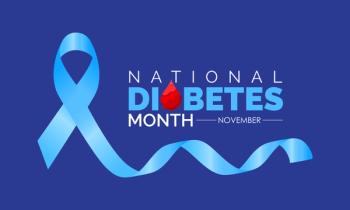
Testing When Patients Present With Indicator Diseases Can Prevent Late HIV Diagnosis
A testing program that screens for HIV when patients have indicator disease can catch the virus early, but should be coupled with patient education.
A testing program that screens for HIV when patients have indicator disease can catch the virus early, but should be coupled with patient education.
Testing patients who present with disease indicative of HIV within 6 months of indicator disease diagnosis has the potential to reduce the risk of late HIV presentation by 50%, the results of an Italian multicenter study suggest.
The practice should be coupled with a campaign to increase patient awareness, however, particularly in patients who do not believe they are at risk of HIV exposure, the authors noted.
The research, published October 10, 2013, in BMC Infectious Diseases, used data from the SENDIH Study, a prospective, multicenter study conducted in 13 regional medical centers and testing sites in Italy’s Lazio region. Researchers included all participants up to April 30, 2009, with CD4 counts available within 3 months of HIV diagnosis. CD4 count levels were then used to determine the number of participants with late presentation of HIV and the number of patients presenting with advanced HIV disease.
Indicator diseases included viral hepatitis, including hepatitis B and C, several sexually transmitted infections (including syphilis, gonorrhea, genital herpes, human papilloma virus, and infectious vaginitis), seborrheic dermatitis, and tuberculosis.
Researchers found 1735 participants with CD4 counts performed within 3 months of their HIV diagnosis. An analysis of the CD4 values determined 51.3% of participants were late presenters, and 34.2% of participants presented with advanced HIV disease. Five hundred four participants reported at least 1 of the indicator diseases prior to their HIV diagnosis, and 120 reported more than 1 indicator disease.
The most frequently detected indicator diseases were sexually transmitted infections, with 382 participants having a prior infection. Viral hepatitis followed with 210 cases—126 were hepatitis B, and 84 were hepatitis C. Only 38 cases of seborrheic dermatitis and 11 cases of tuberculosis were reported.
Of patients reporting indicator diseases, 202 tested HIV positive within 6 months of being diagnosed with the indicator disease, 156 tested HIV negative at least once in the period following their diagnosis, and 123 did not get tested for HIV. HIV information for 23 of the individuals was not available.
Participants with at least 1 HIV indicator disease tended to have a lower risk of late HIV diagnosis, researchers found. Older individuals and women tended to have a higher risk of late presentation, whereas men who have sex with men, intravenous drug users, and patients who previously tested negative for HIV tended to have a lower risk of late presentation.
“These results agree with those from previous studies and suggest that individuals perceiving themselves as being at risk of infection, such as [men who have sex with men] and/or [intravenous drug users], are more likely to be diagnosed earlier than individuals who are not tested until the clinician evaluates the situation and recommends testing, such as foreigners and older people,” the researchers noted.
Within the different types of indicator diseases, those reporting any type of sexually transmitted infection tended to have a lower risk of late HIV presentation, the authors noted. Meanwhile, those reporting either seborrheic dermatitis or tuberculosis tended to have a higher risk of late HIV presentation.
“Our data suggest that testing for HIV following diagnosis of an indicator condition significantly decreases the probability of late HIV diagnosis, and thus reinforces the indication to implement this strategy as an important component of a control policy for the HIV epidemic,” the authors wrote.
Newsletter
Stay informed on drug updates, treatment guidelines, and pharmacy practice trends—subscribe to Pharmacy Times for weekly clinical insights.


















































































































































































































